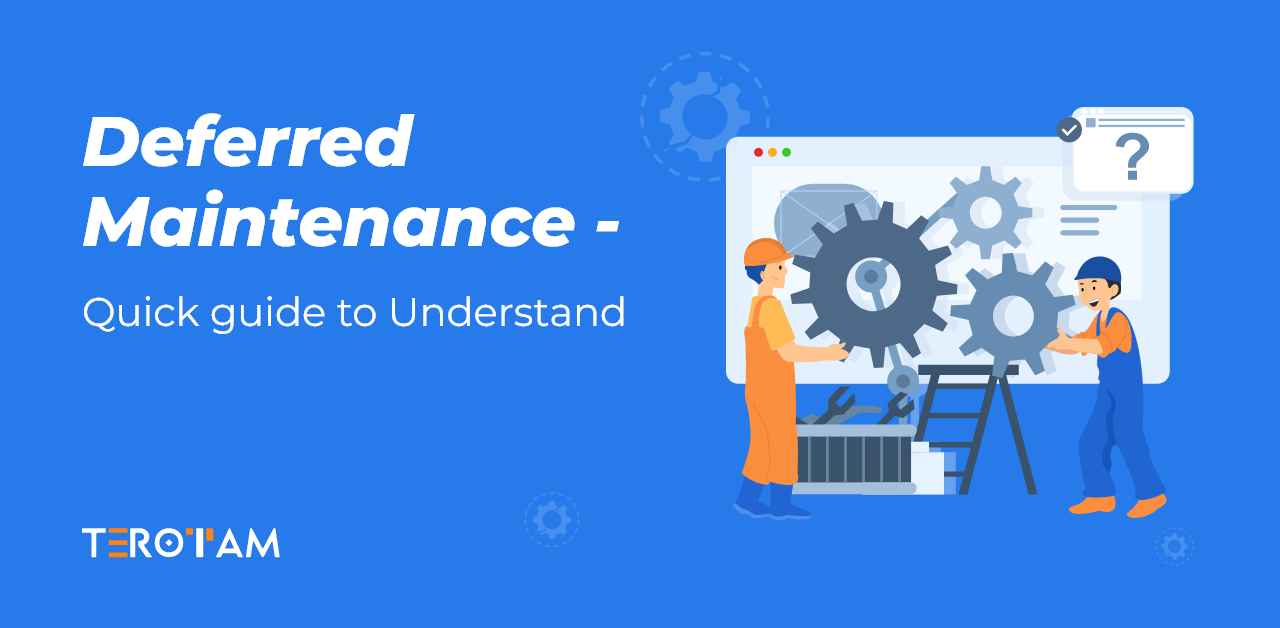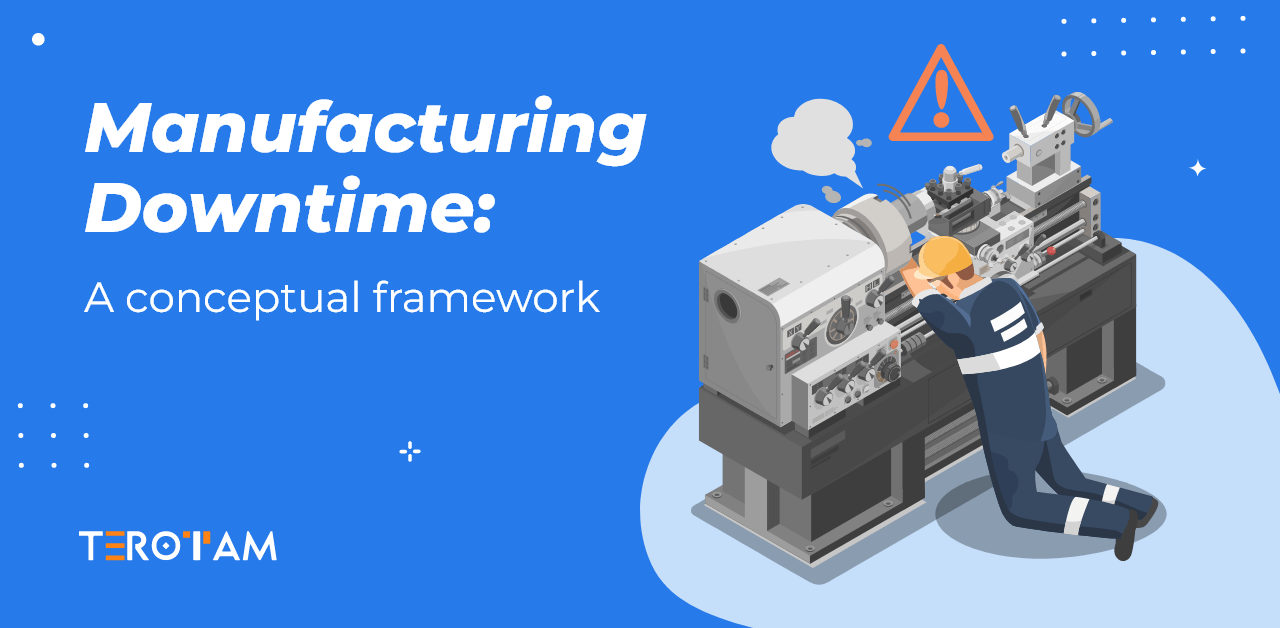Small businesses are always on fire. When you are on the journey from small company to large organization what you have to understand is that every minute your business spends or wastes, it counts in your books. In such a time what your small business can not afford is equipment failure that causes unexpected downtime.
In such times, you must need something that keeps your equipment up-to-date and ensures it is available and working when you need it the most. This is where preventive maintenance becomes necessary.
In this article, we will discuss how preventive maintenance helps small businesses to grow faster with continuous productivity and operational excellence.
What is Preventive Maintenance?
Preventive maintenance is a proactive approach to maintaining your equipment, machinery, and other facilities. It schedules regular maintenance at regular intervals to keep the equipment and other facilities up and running and ensure that your business does not experience unexpected downtime.
The major things on which it focuses are,
- Pre-decided Maintenance schedules
- Regular inspections
- Pre-defined maintenance checklists
- Maintenance audits and tracking
The big question that can come while practicing preventive maintenance for small companies is how to implement it in the right way and at the right time. For this they must design and plan it according to the specific needs and implementation should be tailored enough to suit their requirements and the resource availability.
Why Do Small Businesses Need a Preventive Maintenance Approach?
Small businesses rely on a preventive maintenance approach for several technical reasons that are directly linked to continuous uptime, high efficiency, and operational excellence. Let’s understand them quickly.
Predictive Analytics Integration:
Small manufacturers can integrate predictive analytics into their preventive maintenance strategy. The analytical data they receive from sensors and machine monitoring systems let them anticipate equipment failures before they occur.
- Anticipate equipment failures using historical and real-time data.
- Minimize downtime by addressing potential issues before they occur.
- Optimize maintenance schedules and resource allocation for maximum efficiency.
Condition-based Monitoring:
Implementing condition-based monitoring techniques allows small manufacturers to assess the health of their equipment in real-time.
- Detects early signs of equipment degradation through continuous monitoring.
- Monitor parameters such as temperature, vibration, and fluid levels in real-time.
- Implement automated alerts for immediate response to abnormal equipment conditions.
Remote Monitoring and Diagnostics:
Small manufacturers can leverage remote monitoring and diagnostics technology to monitor equipment health and performance from anywhere, at any time.
- Identify and diagnose equipment issues remotely without physical presence.
- Enable real-time analysis of equipment performance data from anywhere.
- Streamline maintenance operations by remotely accessing equipment status and diagnostics.
- Improve response times and minimize downtime by troubleshooting issues remotely.
Reduced Emergency Repairs:
Reactive maintenance, which involves fixing equipment only when it breaks down, often leads to emergency repairs and costly downtime. Preventive maintenance reduces the likelihood of emergency situations and helps maintain continuous uptime and operational efficiency.
- Minimize the occurrence of emergency repairs by addressing maintenance needs proactively.
- Improve operational reliability and stability by avoiding last-minute, reactive maintenance interventions.
Improved Safety and Compliance:
Regular inspections and maintenance tasks ensure that equipment meets safety standards and regulatory requirements.
- Ensure compliance with safety regulations and industry standards through regular inspections and maintenance.
- Create a safer working environment for employees by addressing equipment safety concerns proactively.
- Reduce the risk of accidents and injuries by maintaining equipment in optimal condition.
How to Implement Preventive Maintenance in a Small Manufacturing Company?
When it comes to such important aspects that can improve your efficiency and excellence, what matters the most is how you implement it. If you don’t know how to approach this technology, the expected results can’t be produced.
Here, let’s understand with a small hypothetical case study of “ABC Ltd – a small manufacturer” facing frequent breakdown and maintenance problems.
Problem Statement of ABC Ltd
ABC Ltd. is facing frequent equipment breakdowns and reactive maintenance practices, leading to production delays and increased costs. To address these challenges, ABC Ltd. recognizes the need to transition to a preventive approach to maintenance.
What ABC Ltd Should Do?
ABC Ltd. should begin by thoroughly assessing its equipment inventory to identify critical assets and their current condition.
Step 1: Conduct Equipment Assessment and Criticality Analysis
- Perform a comprehensive evaluation of all machinery and equipment within the facility, considering factors such as age, usage patterns, and criticality to production processes.
- Utilize Failure Modes and Effects Analysis (FMEA) methodology to identify potential failure modes, assess their impact on operations, and prioritize maintenance efforts accordingly.
- Document critical equipment and establish baseline performance metrics to track changes over time and identify emerging maintenance needs.
Based on this assessment, they should establish clear objectives for their preventive maintenance program, focusing on minimizing downtime, extending equipment lifespan, and improving production reliability.
Step 2: Define Clear Maintenance Objectives and KPIs
- Articulate precise objectives for the preventive maintenance program, emphasizing goals such as Mean Time Between Failures (MTBF) enhancement and Overall Equipment Effectiveness (OEE) optimization.
- Establish KPIs aligned with maintenance objectives to quantify program performance and gauge effectiveness systematically.
On the next stage, Investing in a modern Computerized Maintenance Management System (CMMS) would allow ABC Ltd. to streamline maintenance operations, schedule preventive maintenance tasks efficiently, and track equipment performance data effectively.
Step 3: Invest in Advanced CMMS and Monitoring Solutions
- Procure and implement a sophisticated Computerized Maintenance Management System (CMMS) capable of managing preventive maintenance schedules, work orders, and inventory tracking.
- Explore the integration of predictive maintenance technologies, such as vibration analysis, thermography, and oil analysis, into the CMMS platform to enable proactive equipment health monitoring.
Now at this stage, developing detailed preventive maintenance plans for each piece of equipment and providing comprehensive training to maintenance personnel, ABC Ltd. can ensure that preventive maintenance procedures are implemented consistently and effectively.
Step 4: Develop Comprehensive Preventive Maintenance Plans:
- Develop detailed preventive maintenance plans for each critical piece of equipment, outlining specific tasks, frequencies, and responsible personnel.
- Incorporate Reliability-Centered Maintenance (RCM) principles to identify optimal maintenance strategies based on equipment criticality, failure modes, and performance requirements.
- Implement condition-based maintenance techniques, such as visual inspections and equipment diagnostics, to identify early warning signs of potential failures and preemptively address them.
Now in the last phase, Implementing monitoring and tracking systems, such as sensors and monitoring devices, will enable ABC Ltd. to collect real-time data on equipment performance and identify potential issues before they escalate.
Step 5: Implement Advanced Monitoring and Diagnostic Techniques:
- Deploy precision sensors for real-time machine vibration and temperature monitoring, utilizing techniques like Fast Fourier Transform (FFT).
- Utilize machine learning algorithms (e.g., RNNs, SVMs) to analyze historical sensor data, identifying patterns indicative of impending equipment failures.
- Implement SCADA systems with IoT sensors for continuous monitoring and remote data transmission, facilitating predictive maintenance strategies.
- Utilize diagnostic tools such as Raman spectroscopy and infrared thermography for comprehensive condition monitoring and anomaly detection.
- Integrate Big Data analytics platforms (e.g., Apache Hadoop, Apache Spark) to process real-time sensor data, enabling predictive maintenance analysis.
How Preventive Maintenance Software can be helpful for Small Businesses in practicing Preventive maintenance?
Preventive maintenance software streamlines maintenance scheduling and planning for small businesses. Through centralized platforms, businesses efficiently manage maintenance tasks for each piece of equipment, ensuring timely inspections and servicing. This optimized planning helps allocate resources effectively and minimizes the risk of costly breakdowns.
By implementing preventive maintenance software, businesses enhance equipment reliability. Regular inspections and servicing reduce downtime, improving overall performance. The software also simplifies compliance management by facilitating documentation of maintenance activities and regulatory records, ensuring adherence to industry standards.
Small businesses leverage the data collected through preventive maintenance software for informed decision-making. They identify trends and optimize maintenance schedules to maximize productivity and profitability. Analyzing maintenance data allows businesses to make strategic choices, allocate resources effectively, and drive long-term operational efficiency.
Conclusion
In such a situation, preventive maintenance software for small companies, revolutionizes industrial operations by leveraging advanced algorithms, real-time monitoring, and predictive analytics. It empowers organizations to proactively optimize asset performance, minimize downtime, and foster a culture of collaboration and data-driven decision-making.
Still, confused and need an expert hand-holding? – Let our experts guide you with their expertise. Call us now or write us at contact@terotam.com








